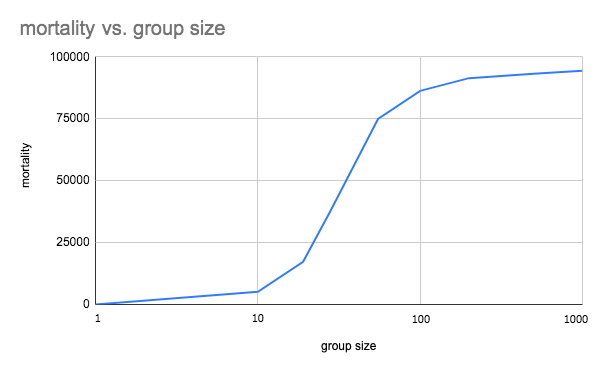This paper uses a variety of analytic and computational models to assess the impact of university student social/study bubbles. Bubbles are being considered as a means to reduce the potential impact of Covid-19 spread within Universities, which may otherwise indirectly cause millions of additional cases in the wider population. The different models agree in broad terms that any breaking of small bubbles into larger units such as a year group or small student halls, will lead to substantial impact on the larger community. This emphasises the need for students to be well-informed and for effective campus test, track and trace.
Headlines
- without strong controls, the return to universities would cause a minimum of 50,000 deaths
- the impact will be felt principally in local communities rather than the students themselves student social/study bubbles have been suggested as a way to reduce this impact
- to be effective bubbles have to be small (approx a dozen) and very strictly maintained
- as a rule of thumb a bubble size of 10 will increase overall population R by 10-20%
- if bubbles 'leak' into wider groups of 50-100 this leads to larger scale outbreaks
Actionable points
- it is critical that students understand how important it is to minimise transmission
- outbreaks are probably inevitable increasing the importance of internal track-and-trace
- minimising student–non-student transmission is also critical to protect communities
Summary
Universities in the UK will welcome around two million students back to campuses across the four nations. The current UK central government Covid-19 strategy is to reduce the rate of transmission, but not eradication. Given this policy, large gatherings, especially over protracted periods, have the potential to create large, hard to control spikes. Universities fall into this category and without mitigating measures the autumn return could cause thousands of death and/or local or national lockdowns.
One potential measures is to encourage students to form social/study bubbles. This paper uses a variety of analytic and computational models to assess the impact of these bubbles themselves. The models agree in broad terms that any breaking of small (ten or so) bubbles into larger units such as a year group or small student accommodation (60-200 students), will lead to substantial impact on the larger community. This emphasises the need for students to be well-informed and for effective campus test, track and trace.
|
Change in overall mortality with different bubble size
(R_pop = 1.0 and p = 2%)
